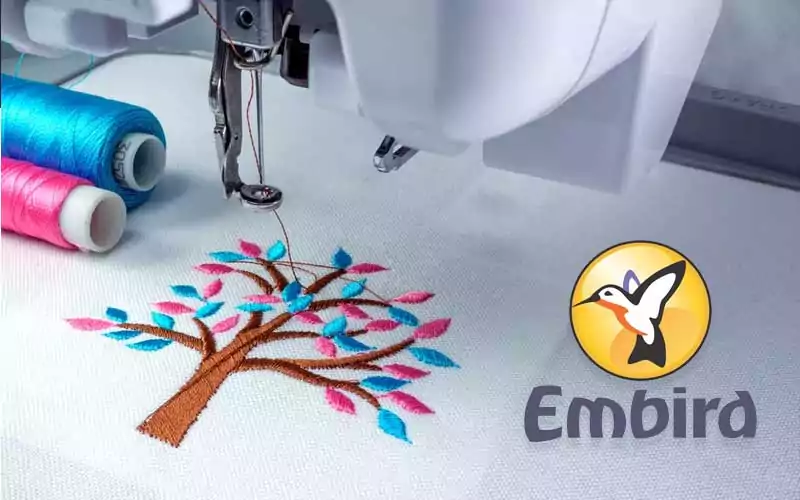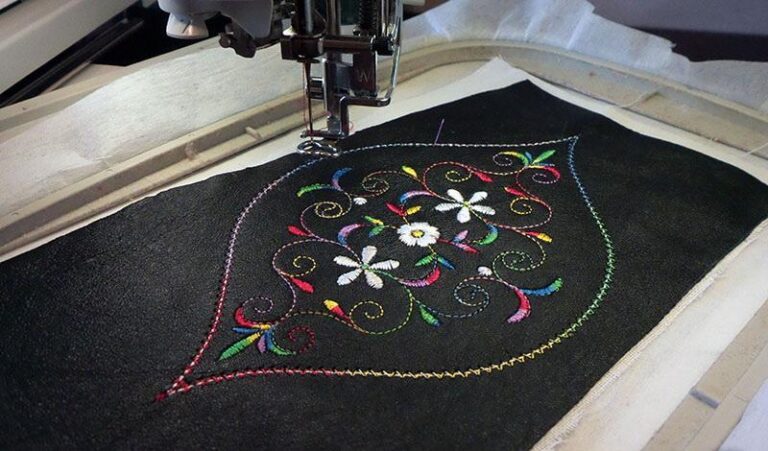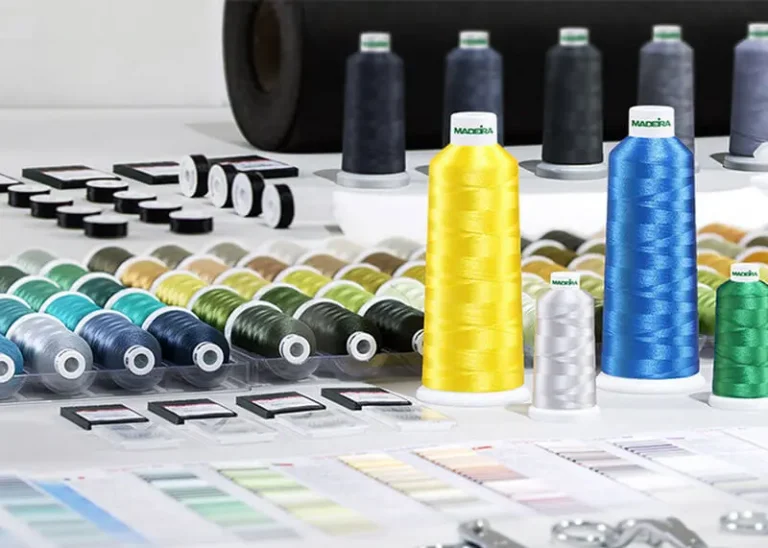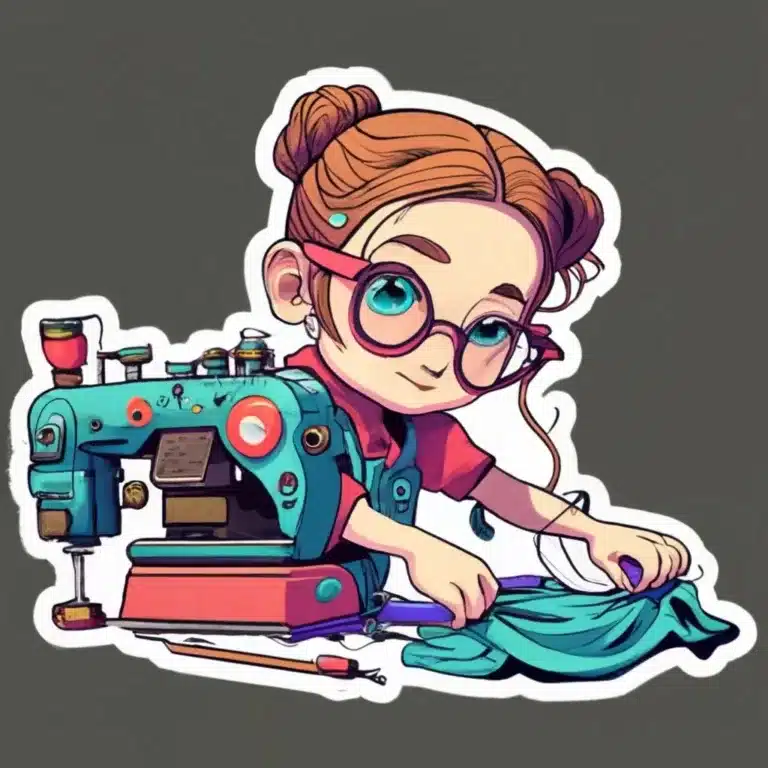Introduction to embroidery design conversion methods
Embroidery design conversion is a vital process for embroiderers, enabling them to adapt and utilize designs across various machines and software. Whether you are working with different file formats, adjusting designs for specific embroidery machines, or seeking efficient and accurate conversion techniques, this article will guide you through the process. We will explore the fundamentals of design conversion, the importance of file formats, software selection, troubleshooting common issues, and advanced techniques to enhance your converted designs. By following this comprehensive guide, you will gain the knowledge and skills needed to easily convert your embroidery designs and achieve outstanding results.
1. Introduction to Embroidery Design Conversion Methods
Embroidery design conversion may sound like something only tech-savvy wizards can handle, but fear not! In this article, we’ll unravel the mysteries of converting your embroidery designs with ease. Whether you’re a seasoned embroiderer or just starting out, understanding the need for design conversion and the benefits it brings will set you on the right path.
1.1 Understanding the Need for Design Conversion
Imagine finding the perfect embroidery design, only to discover that it’s in a file format your machine doesn’t understand. Frustrating, right? That’s where design conversion comes to the rescue. Design conversion allows you to transform designs from one file format to another, ensuring compatibility with your specific embroidery machine. No more tearing out your hair over incompatible files!
1.2 Benefits of Converting Embroidery Designs
Aside from making your embroidery life easier, there are other nifty benefits to design conversion. For starters, it broadens your design options by making a wider range of file formats accessible to you. It also gives you the flexibility to tweak, resize, and customize designs to your heart’s content. Plus, it opens the door to collaborations with fellow embroiderers who might work with different machines or software. So, get ready to expand your embroidery horizons!
2. Understanding File Formats for Embroidery Designs
Ah, file formats – the backbone of embroidery design conversion. Don’t worry; understanding them won’t require a degree in computer science. In this section, we’ll take a bird’s-eye view of common file formats and their compatibility with different embroidery machines.
2.1 Overview of Common Embroidery Design File Formats
Embroidery designs can come in various file formats, including but not limited to .dst, .pes, .jef, and .exp. Each format has its quirks and preferences, so it’s crucial to grasp the basics. Think of it like decoding a secret language that your embroidery machine can understand.
2.2 Exploring the Compatibility of File Formats with Different Embroidery Machines
Not all embroidery machines speak the same language, unfortunately. Some may be fluent in .pes, while others prefer .dst or .jef. Understanding which formats your machine supports will save you from frustrating encounters with “file format not recognized” errors. We’ll dive into the compatibility landscape, helping you navigate the treacherous waters of embroidery machine dialects.
3. Choosing the Right Software for Converting Embroidery Designs
Now that we’ve demystified file formats, it’s time to explore software options for design conversion. In this section, we’ll discuss the factors you should consider when selecting conversion software and recommend a few options to get you started.
3.1 Factors to Consider When Selecting Conversion Software
Before you dive headfirst into the sea of conversion software choices, take a moment to consider your needs. Are you looking for user-friendly software with simple navigation? Or perhaps you require advanced features like stitch editing and color blending. Assessing your requirements will help you find the perfect software match made in embroidery heaven.
3.2 Recommended Embroidery Design Conversion Software Options
Now that we’ve sorted out your preferences, let’s unveil some fantastic embroidery design conversion software options. From well-established industry favorites to hidden gems, we’ll introduce you to software that strikes the perfect balance between functionality and user-friendliness.
4. Step-by-Step Guide to Converting Designs Using Software
Alright, it’s showtime! In this section, we’ll walk you through the process of converting your precious embroidery designs using software. From preparing the design file for conversion to exporting the final result, we’ve got you covered.
4.1 Preparing the Design File for Conversion
Before you can work your conversion magic, a little preparation is in order. We’ll guide you through the essential steps of organizing your design files, ensuring they’re clean and ready for the conversion process. It’s like tidying up your embroidery design’s closet!
4.2 Importing the Design File into the Conversion Software
Now that your files are spick and span, it’s time to bring them into the conversion software wizardry. We’ll show you how to import your design files effortlessly, ensuring they’re ready to undergo their transformation from one format to another.
4.3 Adjusting Settings and Parameters for Optimal Conversion
The conversion process is not set in stone. Depending on your preferences and requirements, you may need to tweak a few settings and parameters to achieve the desired result. We’ll navigate through the magical realm of conversion options, helping you find the sweet spot for your design transformation.
4.4 Exporting the Converted Design File
Congratulations! You’ve successfully converted your embroidery design into a compatible format. Now, it’s time to export and save your hard work. We’ll guide you through the final steps of the process, ensuring your converted design is stored safely and ready for its stitching debut.
And there you have it, a comprehensive guide to converting your embroidery designs with ease and a sprinkling of personality. So, grab your favorite design files and let’s embark on this magical conversion journey together!
5. Troubleshooting common issues during the conversion process
5.1 Identifying and resolving file compatibility errors
We’ve all been there – you’re excited to convert your embroidery design, but then you’re hit with a file compatibility error. Don’t worry, it’s a common issue that can easily be resolved. One of the first steps is to ensure that you’re using the correct file format for your embroidery machine. If you’re unsure, consult your machine’s manual or manufacturer’s website for guidance. Additionally, double-check that your design software is up to date and compatible with your machine. If all else fails, reach out to the software’s customer support for assistance. Remember, file compatibility errors are just a small bump in the road on your embroidery journey!
5.2 Dealing with design distortion or loss of quality
Picture this: you’ve painstakingly converted your design, only to find that it looks distorted or lacks the quality you were expecting. Frustrating, right? Fear not, for there are ways to tackle this issue. First, ensure that your design is properly digitized. Poor digitization can cause distortion and quality loss during conversion. If the problem persists, try adjusting the stitch settings in your embroidery software. Tweaking the density, underlay, or stitch direction might just do the trick. And if all else fails, take a deep breath and remember that imperfections can add character to your embroidery. Embrace the uniqueness!
5.3 Handling software crashes or freezing during conversion
Ah, the dreaded software crash or freezing during conversion. It’s like hitting a traffic jam on the road to embroidery success. When faced with this issue, the first step is to close and restart your software. This simple action often resolves minor glitches. If the problem persists, check if your computer meets the software’s system requirements. Insufficient memory or outdated hardware can sometimes cause crashes. Another helpful tip is to save your work frequently to minimize the risk of losing progress. And if all else fails, remember to keep a sense of humor. Laugh it off, and maybe even consider naming your embroidery software Gremlin – you know, like the mischievous creatures causing trouble!
6. Converting embroidery designs for different machine types
6.1 Understanding the specific requirements of different embroidery machines
Embroidery machines, like people, have their own unique preferences and quirks. To successfully convert designs for different machine types, it’s essential to understand their specific requirements. Take the time to research and familiarize yourself with the supported file formats, maximum stitch counts, and hoop size limitations of each machine. This knowledge will guide you in choosing the appropriate settings during conversion, ensuring compatibility and optimal results. Remember, a little bit of machine knowledge goes a long way in the world of embroidery!
6.2 Adapting designs for embroidery machines with limited capabilities
Not all embroidery machines are created equal. Some may have limited capabilities, but that doesn’t mean your designs can’t shine on them. When converting for machines with lower stitch counts or fewer color options, consider simplifying the design. Remove complex details, reduce the number of colors, or resize elements to fit within the machine’s limitations. By adapting your designs to work with these machines, you’ll unlock a world of possibilities and create stunning embroidery even with limited capabilities. Who knew limitations could be so inspiring?
7. Tips and tricks for efficient and accurate design conversion
7.1 Optimizing design elements for smooth conversion
Converting embroidery designs is an art in itself. To ensure smooth and accurate conversion, it’s essential to optimize your design elements. Start by simplifying complex shapes and reducing unnecessary details. This will minimize the risk of design distortion or loss of quality during conversion. Additionally, check the stitch density and adjust as needed to maintain clarity and balance. Taking the time to optimize your design elements will save you headaches down the road and result in a flawless final product. Your embroidery machine will thank you!
7.2 Utilizing shortcuts and automation features in conversion software
In the fast-paced world of embroidery, time is of the essence. That’s why it’s important to make the most of shortcuts and automation features in your conversion software. Familiarize yourself with the handy keyboard shortcuts to speed up your workflow. Additionally, explore the automation features that can assist with tasks like stitch generation, color mapping, and design placement. By harnessing these time-saving tools, you’ll convert your designs in a breeze and have more time for the fun part – stitching and creating!
7.3 Reviewing and refining converted designs for perfection
Even the most skilled embroiderers know the importance of reviewing and refining their converted designs. After the conversion process, take a close look at the design on your software’s simulation or by stitching it on a test fabric. Pay attention to any areas that may need tweaking or adjustments. Small changes, such as optimizing stitch angles or adjusting colors, can make a world of difference in the final result. Remember, perfection comes with practice and attention to detail. So, don’t be afraid to review, refine, and keep honing your converted designs until they’re truly outstanding!
8. Exploring advanced techniques for enhancing converted designs
8.1 Adding additional embroidery effects and details post-conversion
Why stop at a simple conversion when you can take your designs to the next level? After converting your embroidery design, consider adding extra embroidery effects and details to enhance its visual impact. Experiment with different stitch styles, such as satin or fill stitches, to create texture and dimension. Play with specialty threads, metallic accents, or decorative elements to add that “wow” factor. By exploring advanced techniques, you’ll transform your converted designs into true masterpieces that are sure to turn heads!
8.2 Incorporating color and thread variations for enhanced visual appeal
Color is a powerful tool in embroidery, and it can take your converted designs from good to breathtaking. Take advantage of the versatility of thread colors by incorporating variations in shades, tones, or even multicolor threads. Delve into the color wheel, experiment with contrasting or complementary colors, and let your creativity soar. By exploring the vast world of color possibilities, you’ll add an enhanced visual appeal to your converted designs that will captivate anyone who lays eyes on them. Prepare to become a color magician!
Remember, converting embroidery designs doesn’t have to be daunting. With these troubleshooting tips, knowledge of different machine requirements, smart techniques, and a dash of creativity, you’ll be on your way to converting with confidence and creating embroidery wonders. So, grab your design files and let the stitching adventures begin!In conclusion, mastering the art of converting embroidery designs is essential for every embroiderer looking to maximize their creativity and versatility. By understanding the various file formats, selecting the right software, and following step-by-step guidelines, you can effortlessly adapt designs to different machines and achieve optimal results. Additionally, troubleshooting common issues and exploring advanced techniques will further enhance your converted designs. With the knowledge and skills gained from this article, you are well-equipped to convert your embroidery designs easily and unlock endless possibilities in your embroidery projects. Happy stitching!
FAQ
1. Do I need to convert embroidery designs if my machine accepts multiple file formats?
While some embroidery machines can accept multiple file formats, it is still important to understand design conversion. Converting designs ensures compatibility and optimal performance on the specific machine you are using. It also allows you to make any necessary adjustments or enhancements to the design before stitching it out.
2. Can I use any software for converting embroidery designs, or do I need specialized software?
Specialized embroidery design conversion software is recommended for the most accurate and efficient conversion process. These software programs are specifically designed to handle the intricate details and complexities of embroidery designs. While you may be able to convert designs using other software, it may not offer the same level of precision and functionality as dedicated conversion software.
3. What should I do if I encounter issues during the conversion process?
If you encounter issues during the conversion process, such as file compatibility errors or design distortion, there are steps you can take to troubleshoot. First, ensure that you are using the correct file formats and that your software is up to date. Additionally, check for any specific guidelines or recommendations provided by the software or machine manufacturer. If problems persist, reaching out to the software provider or seeking assistance from embroidery communities and forums can often provide valuable insights and solutions.
4. Are there any additional ways to enhance converted embroidery designs beyond the conversion process?
Absolutely! Once a design has been converted, you can explore various techniques to enhance it further. This includes adding additional embroidery effects and details, experimenting with color and thread variations, and even combining multiple designs to create unique compositions. Don’t hesitate to let your creativity flourish and experiment with different techniques to elevate your converted embroidery designs.






